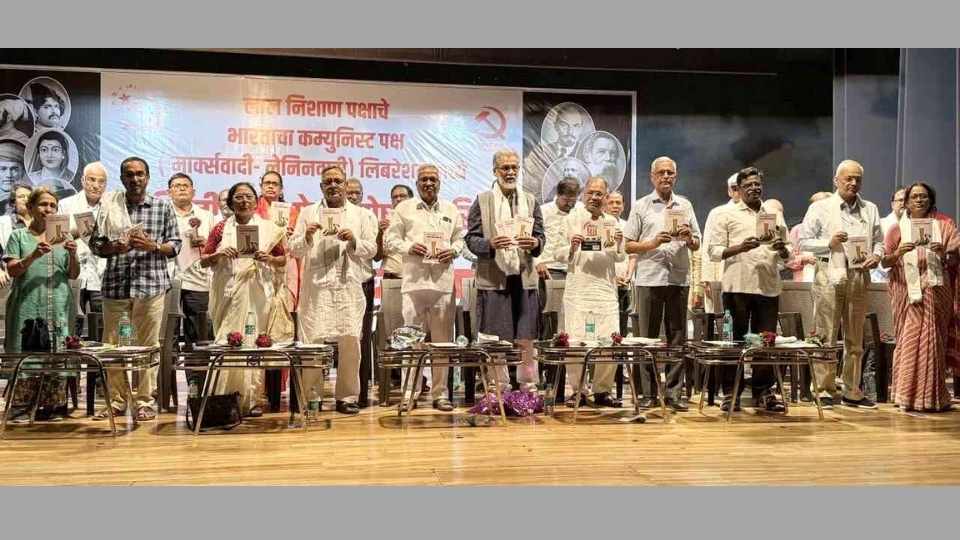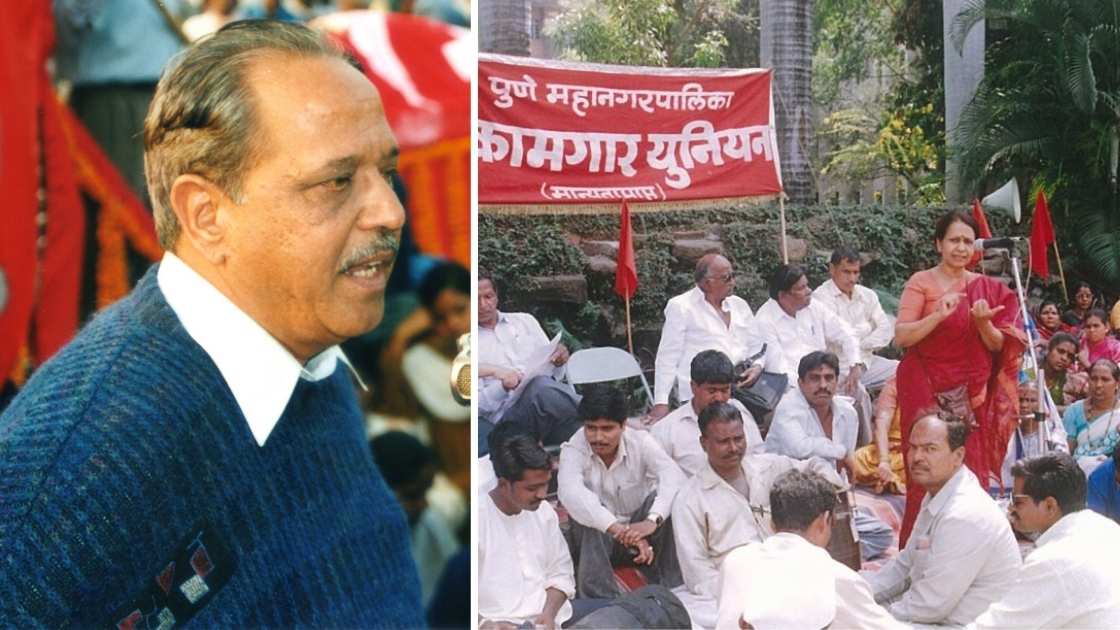The genesis of the LNP in Maharashtra lay in the debate within the communist movement over the communist approach during the 1942 Quit India movement. The movement had emerged from Maharashtra and galvanised the entire country, triggering a powerful mass rebellion and even leading to the formation of a few parallel governments including one in Satara in Maharashtra. The founders of the LNP parted ways with the CPI, called for a vigorous combination of the anti-fascist international task and the anti-colonial national imperative and began to act under the banner of Navjeevan Sanghatana. While organisationally parting ways with the CPI, the Navjeevan Sanghatana considered itself as an integral part of the Indian communist movement and acted accordingly with exemplary commitment, developing strong pockets of influence among workers and peasants, especially the rural poor, in many parts of Maharashtra.
The late 1930s and early 1940s also saw the rise of Ambedkar as a powerful political voice of the social justice and workers' rights cause. In 1936 Ambedkar came out with his clarion call of Annihilation of Caste and formed the Independent Labour Party which declared Brahmanism and capitalism as its twin targets. This paved the way for a short-lived but profoundly significant phase of close cooperation between the communist movement and Ambedkar, a phase marked by encouraging signs of an organic growth of worker-peasant unity and the shaping of progressive legislations for the working class. Unfortunately this phase did not last long and by the late 1940s and early 1950s, the two streams had moved apart amidst considerable bitterness. The LNP represented the only communist section that campaigned actively for Ambedkar in the two elections he contested and lost in 1952 and 1954 and in getting him elected to the Rajya Sabha in 1954 after his defeat in the by-poll.
In the subsequent years, the LNP remained a significant component of the Sanyukta Maharashtra movement and an ally of the Republican Party of India, the last party to have been launched by Babasaheb Ambedkar. A contingent of eight leaders from the LNP stream - Comrades Datta Deshmukh, Bhai Sattha, VN Patil, Santaram Patil, Nagnath Naikwadi, Bapusaheb Bhapkar, Jaisingh Mali and Dongar Rama - won the Assembly elections in 1957. The party led a series of struggles for the welfare and rights of the working people in rural Maharashtra and won victories in struggles for land redistribution and wage increase as well as securing employment guarantee legislation in the wake of severe drought in the state in the 1970s.
The 1970s and 1980s injected new energy in the LNP movement following the party's close interaction with the Dalit Panthers and the 'Magova' group (a group of young Marxist intellectuals and activists active in the first half of 1970s which brought out a Marxist monthly in Marathi named 'Magova' meaning search or investigation). Comrades Ashok Manohar and Mukta Manohar, who were part of the Magova group, joined the LNP and brought in new political and social dynamism in the trade union movement. The LNP also forged close unity with the militant trade union struggles led by Dr Datta Samant, especially the historic textile strike that began on 18 January 1982. In 1984 Samant won the Lok Sabha elections from Mumbai South Central defeating the Congress and the BJP - a remarkable display of workers' power in an election swept by the Congress after the assassination of Indira Gandhi and in which the BJP could secure only two seats.
Meanwhile, in Bihar the revolutionary peasant movement led by the CPI(ML) powered a remarkable electoral assertion of the landless rural poor under the banner of the Indian People's Front. In the 1989 Lok Sabha elections, the anti-feudal struggle broke the feudal-criminal stranglehold on the election process and Comrade Rameshwar Prasad won from Ara in his first ever electoral contest. More victories followed in the 1990 Assembly elections and the massive "Dam Bandho Kam Do" rally in Delhi on 8 October at the call of the IPF attracted the attention of progressive forces across the country.
That was the beginning of the LNP's association with the IPF and CPI(ML) which grew closer over the years. In 1995 Comrades Ashok Manohar and Datta Samant addressed a public rally in Patna along with Comrade Vinod Mishra on the occasion of the third conference of the All India Central Council of Trade Unions. The assassination of Datta Samant in 1997, the demise of Comrade Nagbhushan Patnaik and Comrade Vinod Mishra in 1998 and the passing of Comrade Ashok Manohar in 2003, came as major blows to our respective organisations, but the cooperation between the two parties continued to expand and has now culminated in this historic unification.
The unification of the Marxist Coordination Committee founded by Comrade AK Roy in 1972 with the CPI(ML) in September 2024 and now the merger of the Lal Nishan Party of Maharashtra have armed the CPI(ML) with greater strength and energy at a time when the constitutional foundation and parliamentary democratic framework of India are facing relentless fascist aggression. At stake today is the very direction of the republic as a secular democracy and the rights of citizens in diverse spheres of life without which we cannot fulfil the promise to make India truly free and democracy really functional. A bigger and stronger CPI(ML) is determined to work wholeheartedly for deeper engagement with every democratic struggle of the people, forging closer unity among the Left and seeking broader understanding with the entire non-BJP political spectrum.




